NRAO eNews
Volume Vol#, Issue Iss#
Day# Month# Year#
NRAO eNews
Volume Vol#, Issue Iss# • Day# Month# Year#

Upcoming Events

Jansky Lecture: Prof. Françoise Combes
Feb 14, 2023 | Charlottesville, VA

Jansky Lecture: Prof. Françoise Combes
Feb 15, 2023 | Green Bank, WV

38th New Mexico Symposium
Feb 17, 2023 | Socorro, NM

Jansky Lecture: Prof. Françoise Combes
Feb 17, 2023 | Socorro, NM

New Eyes on the Universe: SKA & ngVLA Conference
May 1 - 5, 2023 | Vancouver, Canada

2023 Gordon Research Conference on Origins of Solar Systems: Chemical and Dynamical Constraints on Planet Formation
Jun 10 - 16, 2023 | Mount Holyoke College, MA

19th Synthesis Imaging Workshop
Jun 13 - 21, 2023 | Charlottesville, VA

The Evolution of Gas in and around Galaxies
Jul 31 - Aug 4, 2023 | Stanley, ID
ngVLA Project News

New Eyes on the Universe: Oral Presentation Abstracts
Please join us 1-5 May in Vancouver, Canada as we discuss and extend the cutting-edge science opportunities enabled by the unprecedented SKA-ngVLA coverage spanning three decades of frequency. We particularly encourage oral presentations from early career scientists, who will be the major users of these observatories. Abstracts for oral presentations are due February 10.
ngVLA Special Session: Chemical Probes of Astrophysical Systems
The NRAO and the next generation Very Large Array Project convened a Special Session titled Chemical Probes of Astrophysical Systems on 11 January at the American Astronomical Society meeting in Seattle, Washington. The session highlighted the ngVLA's Key Science Goal 2 and updated the community about the ngVLA design and development. Eighteen presentations were made and are archived online.
Searches for Extraterrestrial Intelligence with the ngVLA
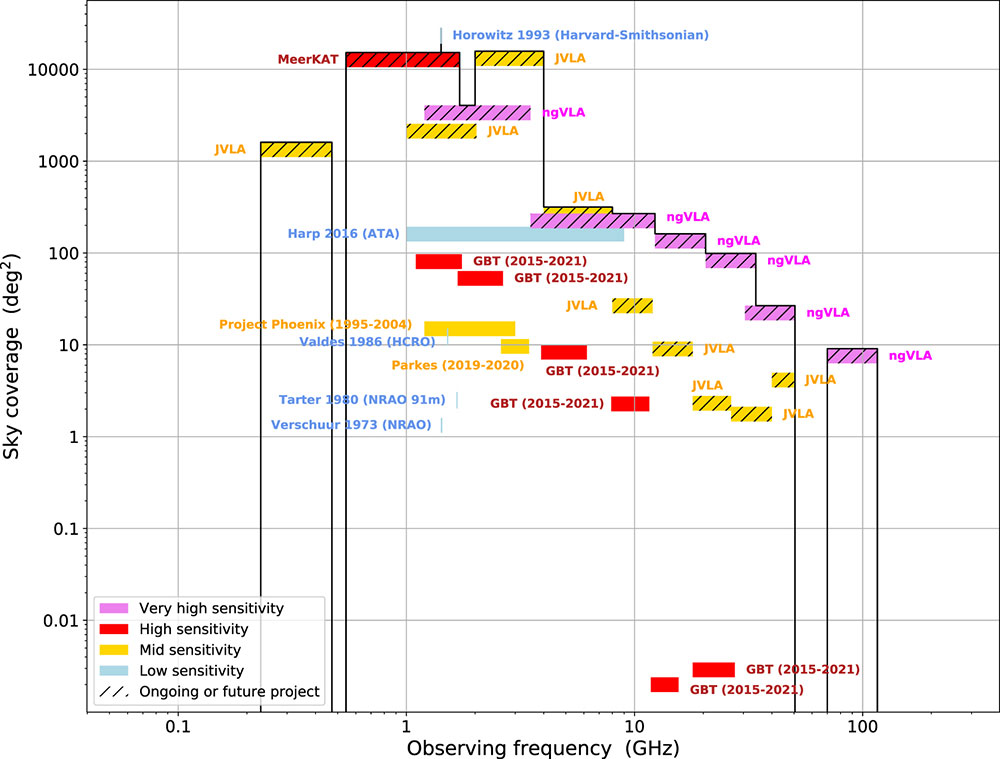
Sky coverage versus observing frequency for previous, ongoing, and proposed SETI surveys. Credit: Ng et al. (2022).
[click to enlarge]
Are we alone? This is a question likely every person on Earth has pondered. Despite its importance, providing a scientific answer to this question is extremely challenging. So far, of order 1000 stars have been targeted in searches for extraterrestrial intelligence (SETI). This is a tiny fraction of the total number of stars in our Milky Way. The main SETI bottleneck is the lack of an efficient sky-mapping telescope that can at the same time provide high sensitivity.
As we argue in Ng et al. (2022), the upcoming next generation Very Large Array (ngVLA) telescope will be transformational for SETI surveys. Its unique sensitivity means that the ngVLA will be the first telescope in the northern hemisphere that is capable of detecting extraterrestrial "radio leakages", transmissions from omnidirectional transmitters out to a distance of 300 parsecs, with power close to the brightest transmitters on Earth.
To take full advantage of the cutting edge capability of the ngVLA, we will want to be listening to any potential extraterrestrial transmission 24/7, maximizing the number of stars monitored. We put forward a proposal of how we can achieve this with an ethernet-based commensal observing configuration, an approach highlighted by Astro2020. This will allow multiple users to subscribe to the ngVLA data stream simultaneously, thus multiplying the facility's scientific output.
SETI research does not (yet) have a known source list, but we can in principle piggyback on any ngVLA observations on any target using any receiver backend. By processing data from only the ngVLA core, we will be able to maximize the field of view and scan more sky area at any given time. We argue for the ability to form of the order of 64 commensal high-spectral-resolution beams, as the large number of line of sights is critical to provide a competitive survey speed when compared to other modern surveys (see figure). Having access to raw voltages will also be highly desirable as it will enable the localization of signals of interest while snippets of data are still in the buffer and allow for more flexible SETI beamforming and visibility computations.
Since 2015 the acronym ngVLA has appeared in 900+ publications indexed in the SAO/NASA Astrophysics Data System. This article continues a regular feature intended to showcase some of those publications. We are especially interested in showcasing work done by early-career researchers. The collection of showcase articles can be viewed online. Anyone wishing to volunteer to author a feature should contact Joan Wrobel.
ALMA Program News
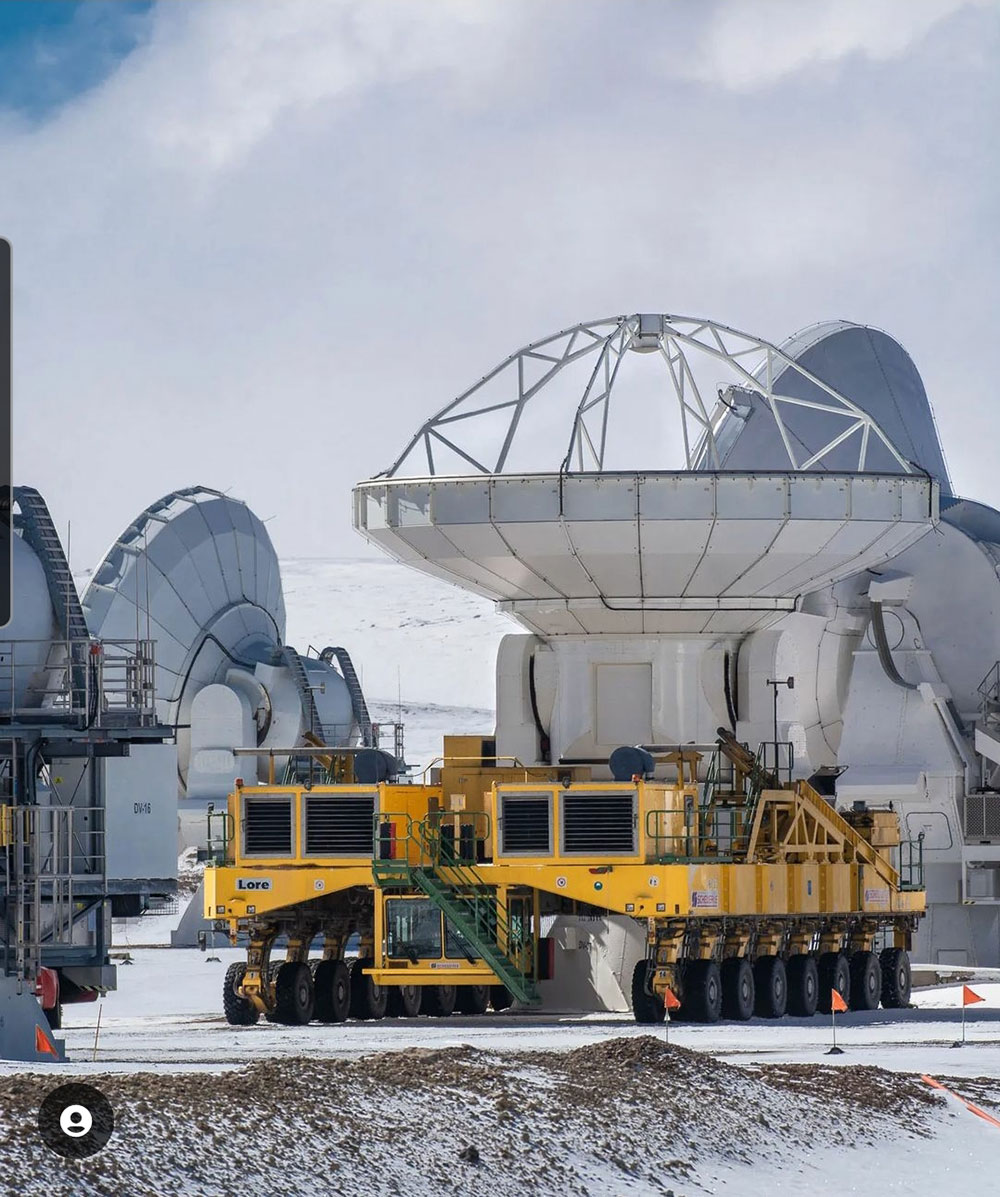
S. Otarola
[click to enlarge]
ALMA Status: Cycle 9 2023
Atacama Large Millimeter/submillimeter Array (ALMA) antennas are moving again as the array expands outward. The antenna configuration remains in C-4. Observations have been continuing successfully with all three arrays. As usual, there will be a maintenance period in February, at the height of austral summer.
Wideband Sensitivity Upgrade
Progress continues on the Wideband Sensitivity Upgrade (WSU), which was featured at a well-attended Special Session at the January American Astronomical Society meeting: ALMA Status and Plans for Increased Capability. One element of the WSU is completion of its frequency coverage of the millimeter window. In Cycle 10 (see pre-announcement item below), ALMA will introduce 8 GHz-wide Band 1 (within 37-50 GHz) on the 12-m Array anticipated to be available from March 2024 (for Stokes I only Cycle 10, no Stokes Q/U/V yet).
Cycle 10 updates
The Cycle 10 pre-announcement was released 18 January. The Call for Proposals will open on 12 April and close on 10 May for Cycle 10, and science observing is anticipated to begin 1 October 2023.
Joint Proposals
As previously announced, the Joint ALMA Observatory (JAO) and NRAO have entered into an agreement to support joint proposals for observations with the Atacama Large Millimeter/submillimeter Array (ALMA) and the Jansky Very Large Array (VLA). These joint proposals started with NRAO Semester 2023B (VLA D-configuration proposal deadline just past) and ALMA Cycle 10 (proposal deadline April 2023, for observations commencing in October 2023). Joint proposals will be permitted only for the main call for ALMA, and the Semester A and B calls for NRAO.
2023 Gordon Research Conference on Origins of Solar Systems: Chemical and Dynamical Constraints on Planet Formation
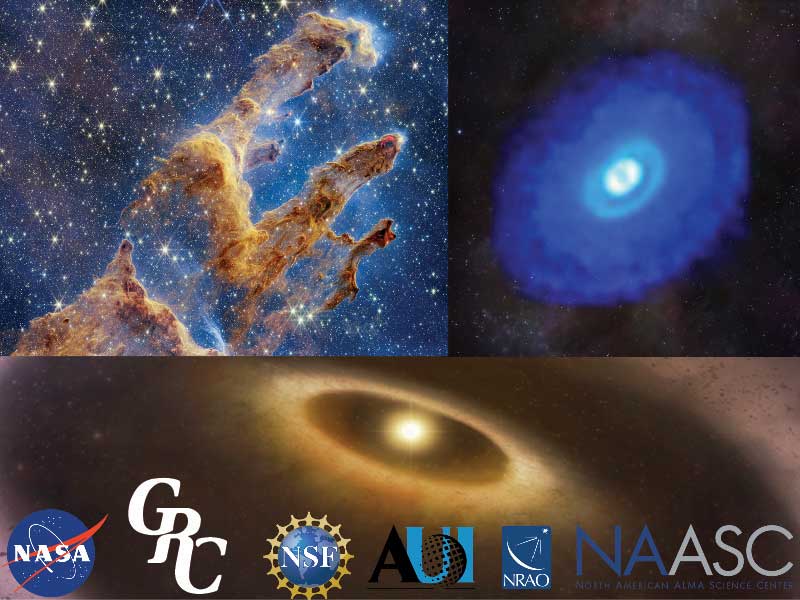
[click to enlarge]
We welcome you to attend the 2023 Gordon Research Conference (GRC) on the Origins of Solar Systems and its associated Gordon Research Seminar, to be held June 10-16, 2023 at Mount Holyoke College in South Hadley, MA, USA.
This meeting aims to advance the frontiers of planet-formation science by bringing together diverse research communities from cosmochemistry, planetary science, and astrophysics to address planet formation.
The meeting has two parts. The week starts with the Seminar aimed at early career students and researchers to present their work, discuss cutting edge ideas and data, as well as to build collaborative relationships with their peers. The main Conference provides time for everyone to engage with presentations of cutting-edge and unpublished research, prioritizes time for discussion after each talk and for posters, and fosters informal interactions among scientists of all career stages.
More information and application/registration are on the conference and seminar websites.
Financial support for participants is available, thanks to support from GRC, NASA, and NAASC. Preference in funding will be given to early career researchers and those from undergraduate, minority-serving, and small institutions. Please first apply to attend the meeting (no payment is required to apply), and then, if needed, apply for funding with this online form by March 5, 2023.
Cycle 10 (2023) ALMA Ambassadors
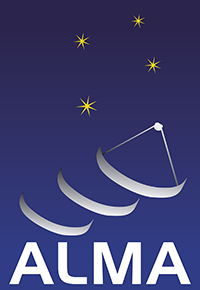
The North American ALMA Science Center (NAASC) is excited to announce the Cycle 10 (2023) ALMA Ambassadors. The Ambassadors program is at the core of the NAASC efforts to reach out to potential ALMA Principal Investigators, and we are grateful for the Ambassadors' contributions to the community. We are looking forward to hosting the Ambassadors in Charlottesville from 14-16 February 2023 and working with them on a series of proposal preparation workshops. Training will cover topics related to ALMA proposal writing and data analysis, including: interferometry basics, ALMA science capabilities, recent ALMA headlines, use of the Observing Tool, and guidance with speaking on these topics.
The ALMA Ambassadors will host a series of workshops targeted at the North American ALMA community–with content similar to Community Day and NRAO Live! events from previous observing cycles–in advance of the Cycle 10 ALMA proposal deadline in May 2023. Later in 2023, Ambassadors will host community training events focused on ALMA Data Processing and Analysis techniques. Information on these events will be released in a future eNews and made available on the NRAO Community Outreach Events page.
2023 ALMA Ambassadors
| Ambassador | Affiliation |
|---|---|
| Miguel Vioque | Joint ALMA Observatory |
| Arianna Long | University of Texas, Austin |
| Emily Moravec | Green Bank Observatory |
| Dylan Paré | Villanova University |
| Jiayi Sun | McMaster University |
| Johnathan Stauffer | National Solar Observatory |
| Marion Villenave | JPL/California Institute of Technology |
| Dongjin Kim | MIT Haystack |
| Adam Dong | University of British Columbia |
| Sinclaire Manning | University of Massachusetts, Amherst |
VLA Sky Survey Epoch 3
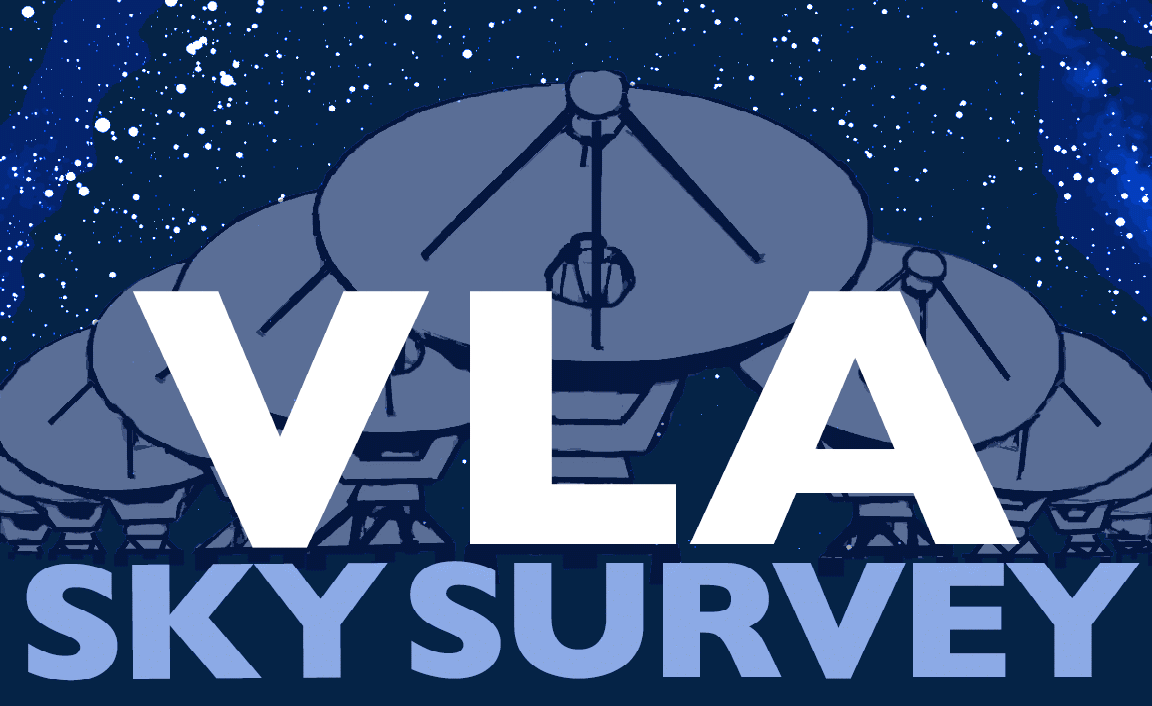
The first observations of the 3rd Epoch of the Very Large Array Sky Survey (VLASS) were taken on 13 January 2023, following completion of the VLA antenna moves to B-configuration. The first half of the 3rd epoch observations (VLASS3.1) are scheduled to continue until 19 June 2023. The Quicklook calibration and continuum image products have already begun rolling out of our pipeline. Quicklook images can be found online at NRAO, and will also be mirrored to the Canadian Astrophysics Data Centre. Raw visibility data and calibration tables can be obtained from data.nrao.edu. The second half of the sky coverage (VLASS3.2) is to be observed from May to October 2024, thereby completing the survey observations with three complete passes of the sky north of declination -40 degrees.
In other VLASS-related news, our partners at the Naval Research Laboratory (NRL) have completed processing of a sky map using the VLA Commensal Sky Survey (VCSS). The VLA Low Band Ionospheric and Transient Experiment (VLITE) system on the VLA observed at 320-384 MHz in parallel with the main 2-4 GHz observations of VLASS during its first epoch (2017-2018). An interactive HiPS image for VCSS1 can be found here.
Kitt Peak VLBA Station Returns to Service
On 17 June 2022, the Contreras Fire swept over Kitt Peak, Arizona, damaging infrastructure and threatening the telescopes located on the mountain. One of those telescopes was the Kitt Peak station of the Very Long Baseline Array (VLBA), which is located on the southwest ridge. The VLBA antenna, despite fire reaching the perimeter fence, suffered no damage, although cleanup of ash both inside and outside the facility was needed.
However, power and networking fiber were both seriously damaged, and access to the site was restricted for seven months due to poor road conditions following both the fire and subsequent rock falls and mud slides. Power was restored on 8 December 2022, but restoration of normal fiber networking will not be completed until later this year. In the meantime, NRAO's Computing & Information Services group, along with New Mexico (NM)-based technical staff, VLBA Operations personnel, and the Technical Specialists at the Kitt Peak site, have implemented an interim solution using satellite internet. This solution allows for observing files to be uploaded to the Kitt Peak site, and monitor and control data to be transmitted back to VLBA Operations at the Domenici Science Operations Center in Socorro, NM, until the fiber can be restored.
After ensuring all the electronics modules are communicating correctly, and updating all the online software, NRAO is happy to announce that the Kitt Peak VLBA antenna successfully participated in observing on 2 February 2023. Staff are monitoring the performance of the antenna, as it continues to take part in VLBA observations.
Submillimeter Array Call for Standard Observing Proposals–2023A Semester
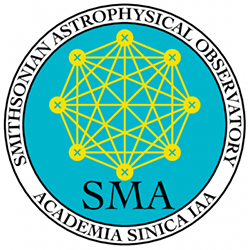
We wish to draw your attention to the next Call for Standard Observing Proposals for observations with the Submillimeter Array (SMA). This call is for the 2023A semester with observing period 23 May 2023 – 15 Nov 2023.
Standard Observing Proposals Submission deadline: Thursday, 2 March 2023 21:00 UTC (4 PM EST)
The full Call for Proposals, with details on time available and the proposal process, will be available by 2 February at the SMA Observer Center (SMAOC) website.
The SMAOC website also contains details on the SMA capabilities and status. Proposal creation and submission is also done through the SMAOC. We are happy to answer any questions and provide assistance in proposal submission; simply email sma-propose@cfa.harvard.edu with any inquiries.
Recent Media Releases
|
ALMA Soon to Receive a New Brain |
|
|
French Astronomer Honored as 2022 Jansky Lecturer |
|
|
Science Highlights 2022: Black Holes, Pulsars and Turbulence |
|
|
Baseline 14— Central Development Laboratory: The Magic Behind the Wonder |
|
|
NSF and SpaceX Finalize Radio Spectrum Coordination Agreement |
|
|
ALMA Scientists Find Pair of Black Holes Dining Together in Nearby Galaxy Merger |
|
|
Hydrogen Masers Reveal New Secrets of a Massive Star to ALMA Scientists |
|
|
ALMA and JWST Reveal Galactic Shock is Shaping Stephan’s Quintet in Mysterious Ways |
From the Archives
Ellen Bouton

[click to enlarge]
About this month's photo: In October 1990, the Very Large Array (VLA) celebrated its 10th anniversary with an International Astronomical Union Colloquium on radio interferometry, held 8-12 October in Socorro. Participants took a break on the "official" day, 10 October, for an anniversary celebration at the VLA site, with speeches, tours, and lunch in the antenna control building. In this photo, Woody Sullivan (University of Washington), Miller Goss (NRAO Assistant Director for New Mexico), and Ron Allen (Space Telescope Science Institute) chat after the lunch.
Thanks to the many readers who responded to our December eNews request for help in identifying the attendees at the 1981 workshop on Extragalactic Molecules. With your input, we believe we now have all identifications.
From the Archives is an ongoing series illustrating NRAO and U.S. radio astronomy history via images selected from our collections of individuals' and institutional papers. If readers have images they believe would be of interest to the Archives, please contact Ellen Bouton.

